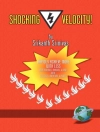This is the first book to systematically describe the range of approaches used in music imagery and Guided Imagery and Music across the lifespan, from young children through to palliative care with older people.
Covering a broad spectrum of client populations and settings, international contributors present various adaptations of the Bonny Method of Guided Imagery to accommodate factors such as time restraints, context (including hospitals, schools, and the wider community), client symptomology, and the increasing use of more contemporary music. Each chapter presents a different model and includes background information on the client group, the type of approach, elements of approach (including length of the session, choice of music, verbal interventions during the music, and discussion of the experience), and theoretical orientation and intention. A nomenclature for the range of approaches is also included.
This information will be a valued guide for both practitioners and students of Guided Imagery and Music and receptive methods of music therapy.
Table des matières
Foreword. Cathy Mc Kinney. Introduction. Denise Grocke and Torben Moe. Part 1. Music Imagery with children and young people (individual and group). 1. Guided Imagery and Music with Children: Exploration of Loss from a Young Age. Mary Reher. 2. Improvisation, Guided Imagery and Music (GIM) and Mandala Drawing with an 11-year old girl. Santiago Vila. 3. ‘The Rhythm that Scares the Monster.’ Music and Imagery for a Child with Complex Trauma after Child Abuse and Neglect. Gunn Karolina Fugle. 4. Short Guided Imagery and Music Sessions in the Treatment of Adolescents with Eating Disorders. Evangelina Papanikolaou. 5. Breathing Space in Music. Guided Imagery and Music for Adolescents with Eating Disorders in a Family-focussed Program. Marthe Lie Noer. 6. An Adaptation of the Bonny Method of Guided Imagery and Music for Public School Classrooms. Linda Powell. Part 2. Music imagery and Guided Imagery & Music (GIM) with adults (individual therapy). 7. Guided Imagery and Music in the Therapeutic Hour: A Case Illustration with an Adult in Eating Disorder Treatment. Annie Heiderscheidt. 8. Guided Imagery and Music (GIM) with Fairytales: A Case Study from a new modified model of GIM in psychiatry. Line Brink-Jensen. 9. Guided Music Imaging for Music Performance Anxiety. Rachael Martin. 10. Guided Imagery and Music (GIM) with clients on stress leave. Bollete Beck. 11. The Floating Leaf: Adapted Bonnie Method Sessions for a Musician with Brain Damage. Nicki Cohen. 12. Guided Imagery and Music (GIM) Adaptations in the Treatment of Trauma Related Disorders. Carola Maack. 13. Peter’s Story – Recovering from a Schizoaffective Disorder. Torben Moe. 14. A Mentalisation-based Approach to Guided Imagery and Music. Isabelle Froehne-Hagerman. 15. MED-GIM: Adaptation of the Bonny Method for Medical Patients: Individual Sessions. Maria Montserrat Gimeno. 16. Music and Imagery in Cancer Care. Tony Meadows. 17. A Spectrum of Adaptations for Palliative Care & End of Life. Therese West. Part 3. Music imagery and Guided Music Imagery & Music (GIM) with adults (group work). 18. TEAM-GIM: A Creative Group Method for Team Building in Institutions and Organisations. Alice Pehk. 19. Music Based Mindfulness: Group Sessions with Adults who have Substance Addictions. Carolyn Van Dort. 20. Focus on Wellness: Using Music Imagery (MI) in Cancer Survivor Groups. Louise Dimiceli-Mitran. 21. Group Music and Imagery (Grp MI) therapy with Female Cancer Patients. Ruth Hertrampf. 22. KMR (short music journeys) with women recovering from gynecological cancer. Margareta Warja. 23. Group GIM for treating fibromyalgia. Esperanza Torres. 24. Group Music Imagery (Grp MI) in the Rehabilitation of Psychiatric Outpatients. Lars-Ole and Inge Pedersen. Part 4. New music programs. 25. The ‘Uplifting’ Music Program (Basic and Extended Versions). Svein Fuglested. 26. ‘Present Moments’: – A GIM Program with Contemporary Art Music. Ellen Thomasen. 27. ‘Awakenings’: A Contemporary Journey. Ian Leslie. 28. ‘Earth Spirit’ Guided Imagery and Music Program. Anthony Hall. 29. Chinese music programs. Wai Man Ng. 30. The ‘Facing the Shadow’ Music Program. Alice Pekh. Part 5. Training. 31. The Journey of Guided Imagery and Music (GIM) Training from Self-Exploration to a Continuum of Clinical Practice. Lisa Summer. 32. Reflections and Connections: Training for Music Imagery Group Psychotherapy. Fran Goldberg. Appendix. Compilation of Music Selections Cited in Chapters 1 – 24. The Contributors.
A propos de l’auteur
Lars Ole Bonde is an associate professor on the music therapy programme at Aalborg University, having previously been head of Ph D studies and associate professor of musicology at the university.












